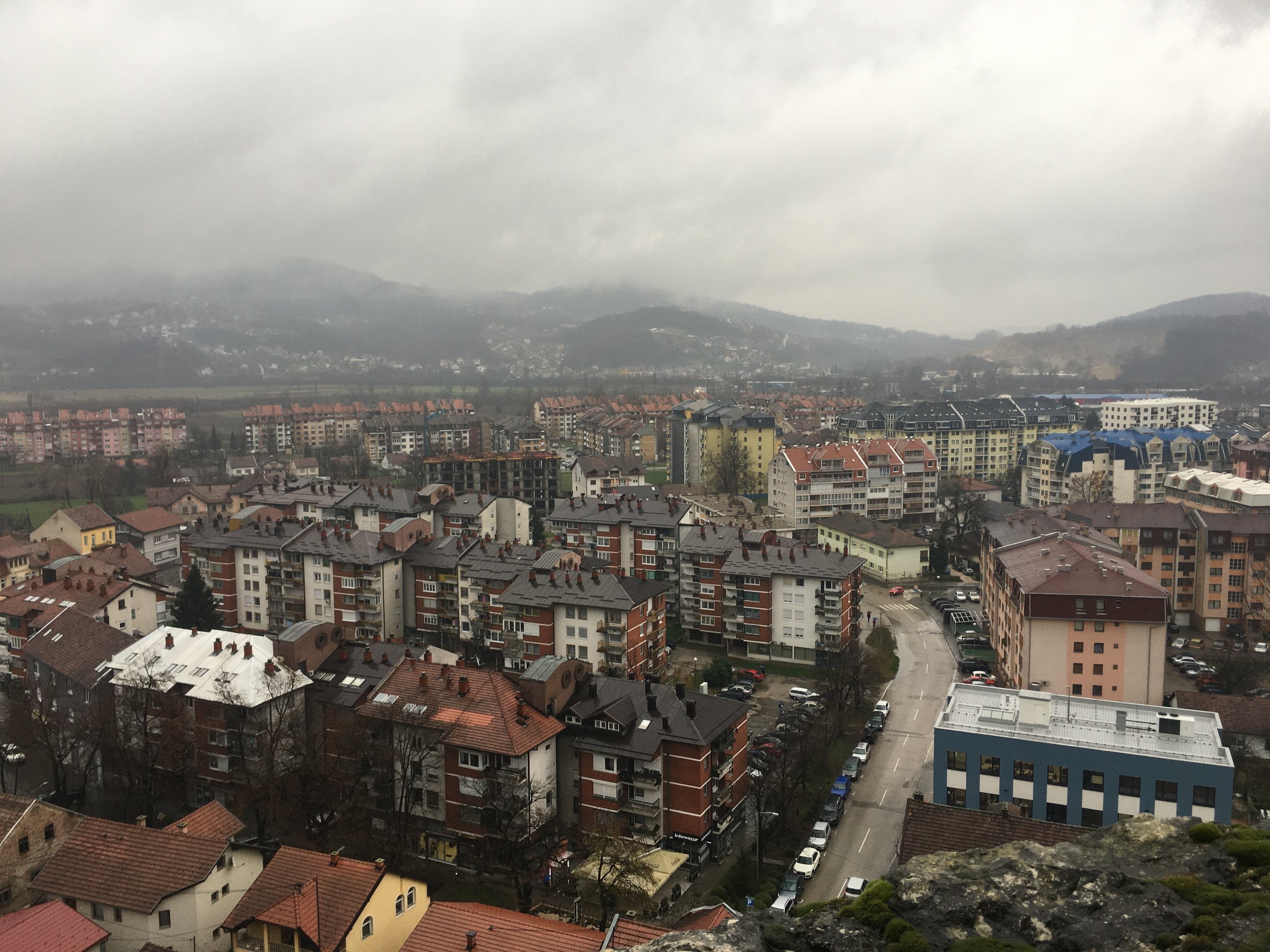Doboj // A Day in the Life of a Poolshark
© fotografcic // Shutterstock.com
I have never been good at putting myself into the shoes of others. I have no shortage of empathy, quite the opposite, but trying to imagine how an individual may or may not have felt at a certain time and place has always been beyond my capabilities. I struggle to remember how I felt at certain points in my life. If you renovate your kitchen, I will forget how it used to look within minutes of seeing the new version.
Besides, what use is there in a 21st-century Welshman trying to imagine the life of an 18th-century Ottoman soldier? Voyeurism, I guess, but surely that shouldn’t extend beyond explicit dreams and careerism? I am no pampered soul, but my existence is far from that of an 18th-century Ottoman soldier.
Despite all of this, I imagined the life of an 18th-century Ottoman lookout guarding the walls of Doboj’s fortress. The rain had been falling steadily since my arrival into the city but had calmed to simple drizzle, coating the view in a haze that did little for the aesthetics of Doboj’s suburbs, but plenty for my imagination. The heavy stuff would return later, but my time in the fortress was punctuated by lazy drizzle. Essential details John, essential. Be sure to keep the reader gripped. Can't you tell the story is not gripping the reader? They are in a state of non-grippedness. They are completely smegging ungripped.
Doboj’s fortress is its most striking thing. A little history? A little history. A range of defensive structures have stood on this hill since the long ol’ days ago, but the form we see today came together in the 15th century. Stone replaced clay and wood, and Gothic elements gave it a panache vital to any and all centrepieces. A Grand Designs-esque overhaul in 1415 brought this about, ahead of the tumult that was to come.
© John Bills
The Ottomans, that is who was to come. They took the fortress in 1476 before properly digging in in 1503, setting up shop for the next 375 years. Sure, Eugene burned it to the ground in 1697, but the Ottomans rebuilt it.
But what use is history to the soldier? I can’t empathise with soldiers in the 21st century, so trying to do so for young men in the 18th century was a fool’s errand. The brain doesn’t follow logic, you know that. I slowly walked the perimeter of the fortress, keeping my eyes trained on the horizon. You never know what enemy might be on its way.
The fog was the only threat on today’s horizon. Fog, mist and concrete. The embattled drudgery of Doboj’s residential areas. A conveyor belt of identikit apartment blocks, copper brick, white panel, machine gun grey slats. The clouds hung low, hovering above the houses, like a nervous boy on his first day of school. Like you, on your first day of school. I wore dungarees. I needed the toilet but couldn’t work out how to undo my dungarees. I cried.
Soldiers don’t cry! What drives people to the army today is different to what drove them centuries ago, yet it also remains the same., Yes, I’m eternally sorry for another fluffy contradiction. Today, people join to serve the nation, follow in the footsteps of family members, to develop skills. Sometimes, people join because they have nothing else to do. ‘If you can’t do, teach’ should probably be ‘if you can’t do, join the army’.
© John Bills
Conscription in the Ottoman military was different. In the early days, avoiding the military wasn’t an option. The devşirme system ensured a steady stream of kidnapped kids to mould into obedient soldiers. There was no shortage of prisoners of war, hostages, slaves. As the Ottoman Empire grew, so did its military. Sure, the eternal war element of it all made its demise inevitable, but I never claimed to be a historian. Quite the opposite, actually.
Fast forward to the 19th century, and reforms were on the way. In times of need, towns were expected to provide men to do battle. A draft was put in place in 1856, but by that time, the Ottoman hold on power was waning. Conscription became compulsory in 1909, but it didn’t matter. The writing was on the wall.
Is it insulting for me to try and put myself in the shoes of an 18th-century Ottoman soldier? I’m going to assume it is. They are two different worlds. Many soldiers came from impoverished backgrounds. Illiteracy was sky-high. Life in the army was harsh, filled with blind obedience, strict discipline and an eternal shortage of everything a human needs to survive. Getting ill was a death sentence. I was miffed about being a little soggy.
The rain continued to fall. By 1740, only around 40 soldiers were stationed at the fortress in Doboj. The town was losing its strategic importance. All the action was taking place elsewhere. A lookout’s day here would have consisted of little more than, well, looking out. You can draw your own lines of comparison to modern Doboj if you must.
© John Bills
Despite the character of these words, I liked Doboj. The views from the fortress were as good as you were going to get here, with far-reaching vistas that showcased a town with plenty of history and an uncertain future. Trains were being reduced. Unemployment is always rising. The eyes of the world are elsewhere.
The eyes of the soldier remain focused on the horizon.
Sufficiently soggy, I wandered back down the hill towards the centre of town. I stopped to consider some street art (Doboj has some of the best in the country), only managing to go arse over tea kettle onto the floor. I slipped, for want of a less simple phrase. The Donja Mahala mosque stifled a laugh.



